Review: 2012 Scion IQ Take Two
Scion is quite sure of one thing: the new iQ is a much better car than the smart fortwo. What they’re much less sure of: how many of the targeted fine young North American urbanites will buy one rather than periodically use Zipcar. I’m neither young nor urban, but I’m going to do my best to pretend. Why might I buy this car—or not?
Exterior styling – not
Toyota fits the iQ with 16-inch wheels that can be upgraded to multi-spoke alloys in a bid for the intended buyer. But the exterior isn’t nearly as stylish as the smart’s, with a frumpy nose, awkward B-pillar, and a single, square-cut door filling nearly the entire space between the wheel openings. Add the relatively large wheels, and the whole looks like a Photoshop chop—except it’s real, with a 79-inch wheelbase (vs. 74 for the smart) and 120-inch overall length (vs. 106). Scion has been struggling to get its mojo back ever since launching the bloated second-gen xB. With the iQ the struggle continues.
Interior styling – maybe
The interior is more successfully stylish than the exterior, but still has none of the whimsical character you’ll find inside a 500 or a MINI. All of the surfaces are—surprise—hard plastic but they generally look and feel solid. The red-stitched leather-wrapped steering wheel and the glossy black trim on the doors and center stack are high points. The controls are simple and easy to use, with three large vertically-aligned knobs for the climate controls. Less functional: the driving position is well aft of the windshield, so traffic lights aren’t visible if you stop at the white line. The button to temporarily deactivate the traction control (but not the stability control) is mounted low on the far side of the shifter. A power lock button sits next to it, but there’s another more conveniently located on the driver’s door. My suspicion: the design initially included only the button on the console, in line with European practice, but the Scion marketing folks insisted on having buttons on the doors, where Americans expect them. They got half of their request.
Interior packaging – where the car earns its nameplate
I’m a space efficiency geek. The intelligent packaging and seating of the Ford Freestyle and Taurus X is perhaps the main reason (beyond the need for seven seats) that I bought one of the latter.
Toyota is most proud of its packaging innovations for the iQ, and this part of their pitch for the car is not hype. Though only a foot longer than a smart, the iQ has a rear seat that can fit one adult without resorting to cruel and unusual punishment, and two with it. They were able to pull this off by:
- Placing the engine in the nose of the car (it’s in back with the smart) and locating the differential ahead of the transmission, which sits next to the engine. This enables an unusually short front overhang, and would improve the appearance of even large front-wheel-drive cars. (Back in the 1990s, GM’s designers wanted to flip transverse powertrains around for this very reason, but the engineers refused to enable any such silliness.) A special high-mounted steering rack also plays a role.
- Compacting the A/C componentry and locating the evaporator behind the center stack rather than ahead of the front passenger, enabling the right front seat to be shifted forward a few inches. Which is why the right rear passenger enjoys more legroom than the left rear passenger. Space is provided between the front seats for the left rear passenger’s legs, as the driver’s seat can slide all the way to the rear seat cushion. This space exists because, with a width of 66 inches, the iQ is over a half-foot beamier than the smart. A by-product: those in the front seat sit about as far apart as they would in a C-segment car like the Corolla, not shoulder-to-shoulder like they do in the smart.
- Developing ultra-thin seatbacks. They don’t feel substantial, but aren’t uncomfortable.
- Developing an ultra-thin fuel tank—it’s only 4.5 inches tall—and locating it beneath the driver’s seat.
- Adding an eleventh airbag that deploys over the rear window, essentially a rear curtain airbag. There are only a couple of inches between the rear seatbacks and the liftgate, so otherwise the rear seat would be dreadfully unsafe instead of…
Of course, Toyota’s engineers can’t do magic. So without folding at least half of the rear seat there is absolutely no cargo room.
Electronics – good, but better gadgetry on the way
Bluetooth (hands-free phone and audio streaming), USB, and HD radio are all standard, while nav is available as a dealer-installed accessory. But something like Toyota’s new Entune system, with Internet-based apps, is a year or two away.
Performance – quicker than a smart!
The iQ weighs only 2,127 pounds, but this is still a bit much for the 94-horsepower 1.3-liter four-cylinder hitched to a mandatory CVT. (The smart weighs 300 pounds less, but has only 70 horsepower.) In normal mode the CVT produces the rubber-banding effect typical of CVTs paired with small engines. Shifting into S largely eliminates this while also kicking the revs up a grand or two (so it’s not a full-time solution for anyone interested in fuel economy). And if you want to keep the small four at high boil there’s B (intended for engine braking on downhill grades) that further bumps the engine speed. Not the ideal transmission, especially not for driving enthusiasts, but far better than the clunky automated single-clutch manual in the smart. The engine sounds better than that in the Nissan Versa, which similarly employs a CVT, but remains well short of spine-tingling. There’s no joy in winding this one out. Sixty arrives in an acceptable ten to eleven seconds, but acceleration trails off considerably past that mark.
Fuel economy – very good in the city, meh on the highway
Scion touts the iQ’s fuel economy as the best of any non-hybrid. But the EPA rating of 36 city is much more impressive than the 37 highway. Then again, the iQ is marketed as a “city car,” not a “highway car.”
Handling – not remotely a new CRX
The best that can be said of the iQ’s handling is that its ultra-tight 12-foot turning radius, roughly two-thirds that of the average car, is truly a joy to experience. The second best: unlike the smart, the tiny Scion drives much like a regular car. Perhaps too much like a regular car, if by “regular car” we mean a Camry. Aided by the car’s unusually high width-to-wheelbase ratio, roll and understeer in hard turns are both moderate. But the steering is neither quick nor communicative, handling isn’t particularly agile, and the non-defeatable stability control cuts in well short of the car’s limits. The legendary Honda CRX was a thrill to drive sideways. That won’t be happening here. The iQ drives like an appliance.
Ride – survivable
Given the iQ’s ultra-short wheelbase, a choppy ride is a given. Drive over 60 down a concrete freeway (again, not the car’s primary mission), and expansion joints induce a rhythmic bouncing. But otherwise ride quality isn’t bad, and doesn’t feel like that of a very small, very light car. Though larger and heavier, a FIAT 500 rides worse.
Pricing – bespoke bits aren’t cheap
The iQ lists for $15,995. Scion continues to practice “Pure Pricing.” This doesn’t mean that dealers cannot discount, only that they must offer the same price to everyone. A similarly-equipped smart fortwo lists for $16,850. Adjust for the iQ’s additional features using TrueDelta’s car price comparison tool, and its advantage widens to a considerable $2,300.
But Scion rightly isn’t taking the smart seriously as a competitor, at least not in North America. Here stiffer competition will come from the Fiat 500 and B-segment cars. The much more entertaining Mazda2 costs a grand less, though a $1,600 feature adjustment gives the iQ a $600 advantage. Compared to a FIAT 500 Pop, the iQ is $1,000 less before the feature adjustment, $400 less afterwards. So the prices for these three are quite close before discounts and incentives—which will tend to favor the Mazda and (as the cars pile up on dealer lots) the FIAT.
Bottom line: The iQ costs about as much as B-segment cars despite being much smaller and less fun to drive.
Sales forecast – not promising
So, the Scion iQ isn’t going to sell based on its price or driving excitement. Its packaging innovations are impressive, but you don’t have to own the car to admire them. Though the iQ is a much better car than the smart fortwo, the latest B-segment cars are better still in nearly every way. In terms of fuel economy, the iQ does very well in city driving, but the larger cars do better at higher speeds (where the Scion is out of its element). In the end, the iQ’s key strengths are its short length and ultra-tight turning radius, both of which make it easy to park in the city. But how many people have ease of urban parking as their top priority AND will be buying a car rather than occasionally renting one?
Scion provided the vehicle, insurance, and fuel for this review at a media event.
Michael Karesh operates TrueDelta, an online source of automotive pricing and reliability data.
Michael Karesh lives in West Bloomfield, Michigan, with his wife and three children. In 2003 he received a Ph.D. from the University of Chicago. While in Chicago he worked at the National Opinion Research Center, a leader in the field of survey research. For his doctoral thesis, he spent a year-and-a-half inside an automaker studying how and how well it understood consumers when developing new products. While pursuing the degree he taught consumer behavior and product development at Oakland University. Since 1999, he has contributed auto reviews to Epinions, where he is currently one of two people in charge of the autos section. Since earning the degree he has continued to care for his children (school, gymnastics, tae-kwan-do...) and write reviews for Epinions and, more recently, The Truth About Cars while developing TrueDelta, a vehicle reliability and price comparison site.
More by Michael Karesh
Latest Car Reviews
Read moreLatest Product Reviews
Read moreRecent Comments
- Jkross22 Sure, but it depends on the price. All EVs cost too much and I'm talking about all costs. Depreciation, lack of public/available/reliable charging, concerns about repairability (H/K). Look at the battering the Mercedes and Ford EV's are taking on depreciation. As another site mentioned in the last few days, cars aren't supposed to depreciate by 40-50% in a year or 2.
- Jkross22 Ford already has an affordable EV. 2 year old Mach-E's are extraordinarily affordable.
- Lou_BC How does the lower case "armada" differ from the upper case "Armada"?
- TMA1 Question no one asked: "What anonymous blob with ugly wheels will the Chinese market like?"BMW designers: "Here's your new 4-series."see also: Lincoln Nautilus
- Ivor Honda with Toyota engine and powertrain would be the perfect choice..we need to dump the turbos n cut. 😀



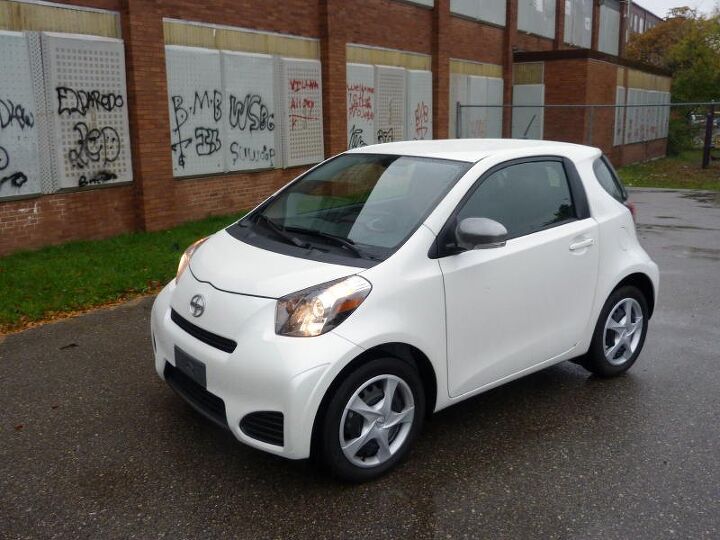




























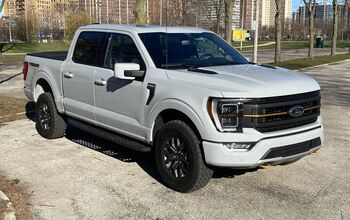
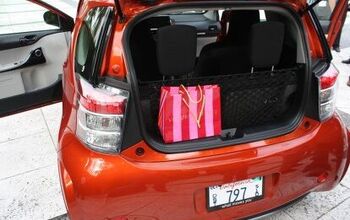
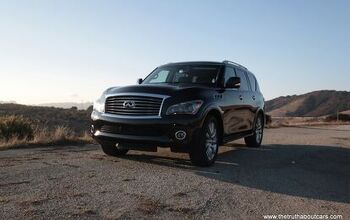
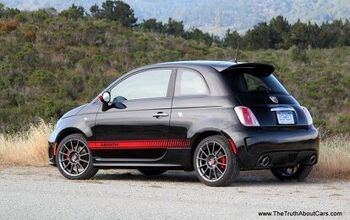
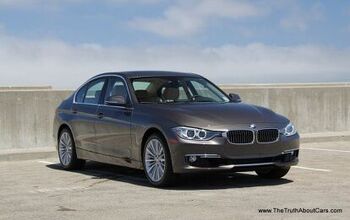
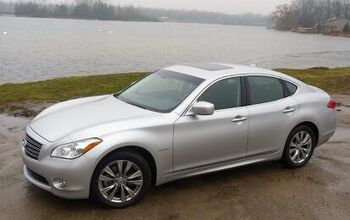
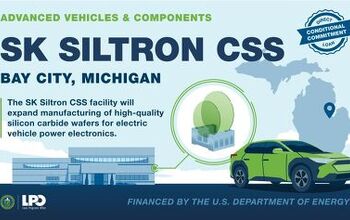
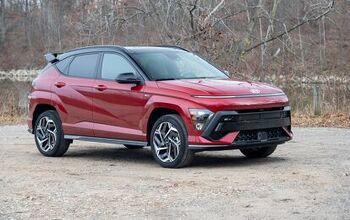

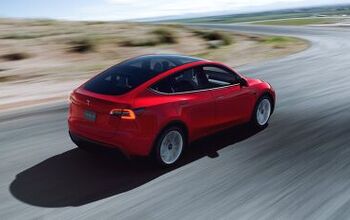

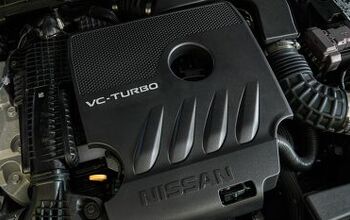

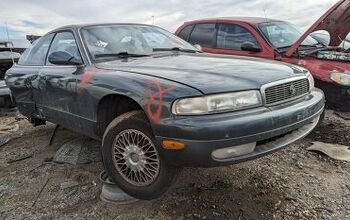
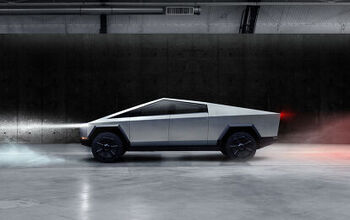
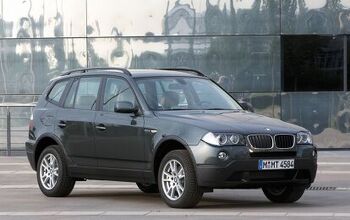
Comments
Join the conversation
Nice idea but like you said it's all about dimensions with these cars. Here in madison, WI, now that there's a smart dealer those things are multiplying like rabbits because there IS no parking, especially in winter. I doubt, though, that people are going to say yeah I'll get a "4 passenger" micro car instead of the smart... or this over a Fiat! Though some people might buy this instead of the obligatory madison scooter.
"4.Developing an ultra-thin fuel tank—it’s only 4.5 inches tall—and locating it beneath the driver’s seat." Little disturbed by that. Especially if it goes Ford Pinto on you. "the EPA rating of 36 city is much more impressive than the 37 highway. Then again, the iQ is marketed as a “city car,” not a “highway car.” So was my '93 Festiva with the 1.3L and 12" tires. It got better mileage than this with the A/C on. Funny, don't remember paying $16K for it.